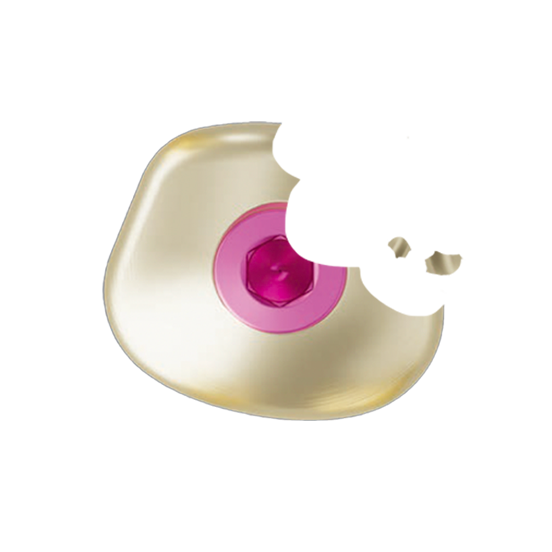INFODENT - REHABILITACIÓN IMPLANTO-PROTÉSICA SENCILLA EN LA ERA DE LA IMPRESIÓN 3D
Dr.Francesco Mangano - Prof.Carlo Mangano - Dr.G.Marco Morello
Descubra el nuevo artículo de Infodent que incluye :
EL CASO CLÍNICO
Rehabilitación implanto-protésica sencilla en la era de la impresión 3d
DIGITAL@LYRAETK
i-PHYSIO®. Revolucionando la implantología
LA ENTREVISTA
La simplificación y racionalización de la implantología protésica con i-Physio®.
Pilares de cicatrización iPhysio® para la gestión del perfil de emergencia en implantología
- What is the implant emergence profile?
- What is the role of the emergence profile?
- What factors contribute to emergence profile stability?
- How does the iPhysio® system work?
All the answers in this study by dentists Jérémie Perrin and Antoine Prouhèze.
Ventajas clínicas de la técnica del escudo de alveolos en combinación con componentes de implantes anatómicos transmucosos
Case report: clinical benefits of socket shield technique combined with transmucosal anatomic implant components
By Marco Morello, Enrico Poglio, Andrea De Maria, Mario Bresciano in Quintessence Publishing Co (2023)
One of the key factors in the aesthetic success of implant-supported prostheses in the esthetic zone is the preservation of the natural architecture of the peri-implant tissues.
The present case replaces two maxillary lateral incisors with reduced vestibular cortical bone with implant-supported crowns. The socket shield technique was adopted to conserve tissue volume, guided surgery was used to achieve optimal implant insertion, and anatomically shaped transmucosal implant components were selected to shape the peri-implant soft tissues with ideal emergence profiles and enable direct digital impressions without scanbodies.
The combination of immediate implants, guided surgery, socket shield technique, anatomically shaped transmucosal implant components and scanbodies-free digital impressions has resulted in a successful rehabilitation with healthy, stable and anatomically shaped peri-implant tissues.
Tesis: En la interfaz implante-prótesis: una nueva técnica con el concepto iPhysio
Thesis: At the implant-prosthesis interface: a new technique with the iPhysio® implant abutment concept, illustrated by a case study
By Marius BILLOD.
Discover the benefits of the iPhysio Profile Designer in implant-supported rehabilitation.
This biocompatible abutment is unscrewed only on the day the prosthesis is fitted, limiting manipulation of peri-implant soft tissues.
Its adapted morphology promotes gingival healing and provides a semi-anatomical emergence profile for the in-use restoration.
Estudio: Reutilización de pilares de cicatrización
An In Vitro Analysis of Sodium Hypochlorite Decontamination for the Reuse of Implant Healing Abutments, Ahmad H. Almehmadi, BDS, DSc - Journal of Oral Implantology (2021) 47 (4): 271-279.
A study, published in August 2021 in the Journal of Oral Implantology, analyzes NaCl decontamination of healing abutments.
The analysis shows that although NaCl decontamination removes all traces of bacteria, deposits remain present in the interstices.
Further study of the composition of these elements is required to determine whether NaCl-decontaminated healing abutments can be reused.
Estudio: Análisis del comportamiento de los tejidos blandos durante la toma de impresiones
Volume of unsupported peri-implant soft tissue over time: A cross-sectional observation study, Galibourg A, Dumoncel J, Cormary J, Maret D - Journal of Prosthetic Dentistry. 2021 June;125(6):883-889
This study analyses the behaviour of peri-implant soft tissues when they are no longer supported, as will be the case during impression taking when the healing abutment is unscrewed.
It concludes that the emergence profile collapses significantly when the tissues are unsupported for 30 seconds or more.
El sistema iPhysio®: Una (R)evolución tecnológica en implantología
By Laure LINGOIS and Nicolas BAILLY
Dissertation - University diploma in oral implantology: anatomical bases and clinical implantology
Contornos críticos y subcríticos para coronas implantosoportadas
Par Oscar González-Martín, Ernesto Lee, Arnold Weisgold, Huan Su
Paru dans The International Journal of Periodontics & Restorative Dentistry, v30, n°3, 2010
Gestión del contorno gingival de las restauraciones implantosoportadas: Directrices para restauraciones provisionales inmediatas y diferidas
Par Oscar González-Martín, Ernesto Lee, Arnold Weisgold, Mario Veltri, Huan Su
Paru dans The International Journal of Periodontics & Restorative Dentistry, v40, n°1, 2020
Metaanálisis de la influencia de las desconexiones de pilares en el hueso marginal periimplantario
By João Gabriel de Carvalho Barbara, Diogo Luz, Katia Vianna, Eliane Porte Barboza
Meta-analysis of 5 randomized clinical studies with 12-month clinical follow-up on the immediate use of a definitive abutment during implant surgery published in International Journal of Oral Implantalogy 2019 ;12(3) :283-296
This meta-analysis shows that reducing the number of abutment disconnections contributes to a significant reduction in bone loss in the peri-implant marginal bone.
Tesis: Riesgos asociados a la reutilización de pilares de cicatrización de un paciente a otro (estudio piloto sobre casos comparativos).
By Boubée E.
Presentation of a study on the risks associated with the reuse of healing abutments from one patient to another. Thesis by Edouard Boubée, year 2019, Université Clermont Auvergne - Unité de formation et recherche d'odontologie.
Objective : The aim of this study was to determine whether the zirconia coating on Profile Designers iphysio® allows them to be sterilized and decontaminated for reuse.
Methods : Scanning microscope observation of previously used and decontaminated Profile Designers iphysio® and healing abutments. These used healing abutments were compared with new healing abutments. The residues present on the healing abutments and Profile Designers iphysio® were analyzed using a spectrometer to determine the composition of these residues.
Results : Sterilization and decontamination of Profile Designers iphysio® did not completely remove any contaminants, despite the zirconia coating, which is less adherent than titanium.
Conclusion : The reuse of healing abutments of any kind, due to the impossibility of completely eliminating all traces of contaminants, systematically entails a risk for the patient receiving the previously used abutment.
